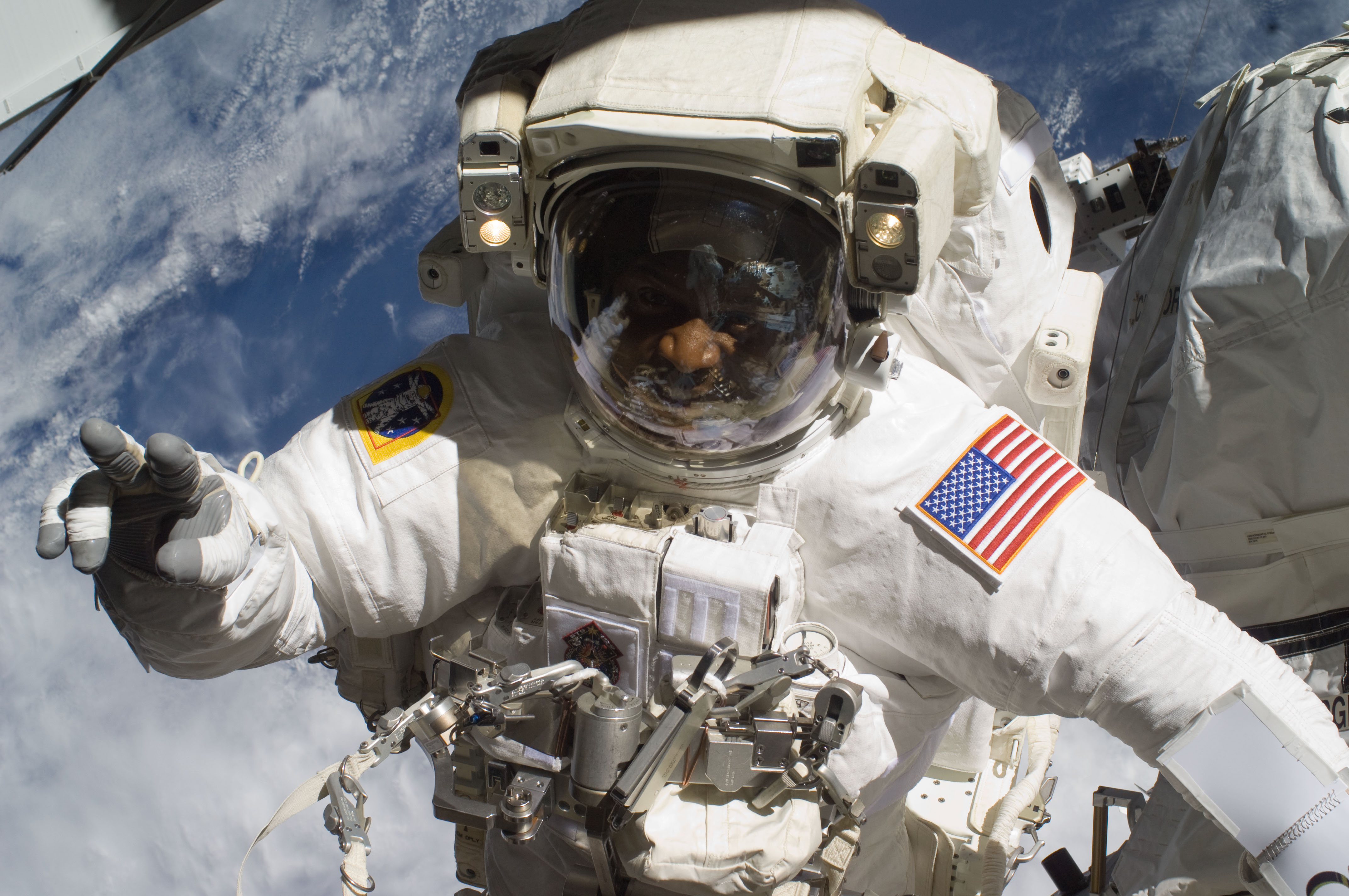Robert L. Satcher, PhD, MD
This article covers Feinberg’s faculty astronaut. Read about our astronaut alumni in this article from 2024.
By Emma Florio, Archives & Research Specialist
 |
|
2009 NASA portrait. Via Wikimedia Commons.
|
Robert L. Satcher, Jr., was born on September 22, 1965, in Hampton, Virginia, a city on the Atlantic coast, and coincidentally, home to NASA’s Langley Research Center. His father was a chemistry professor at the historically Black Hampton University and his mother was an English teacher. His uncle, David Satcher, served as the 16th Surgeon General of the United States from 1998-2002. As a child, Satcher was interested in science and space, and wanted to be an engineer, a doctor, and an astronaut – and would eventually become all three.
At age 16, Satcher enrolled at the Massachusetts Institute of Technology and earned a BS in chemical engineering in 1986. He then enrolled in the Harvard-MIT Program in Health Sciences and Technology, which led to a PhD in chemical engineering in 1993 and an MD in 1994. Over the next seven years, Satcher completed a series of internships, residencies, and fellowships in orthopedic surgery, bone biology, cellular biomechanics, and orthopedic oncology. In 1997 he married pediatrician D’Juana White, with whom he has two children.
Satcher joined the faculty of the Feinberg School of Medicine in 2001, as an assistant professor of orthopedic surgery. As an orthopedic oncologist, his specialties included bone deterioration, and he was one of the few surgeons in the nation to perform bone salvage surgery (in which the cancerous part of the bone is removed and replaced by a bone graft or metal or plastic endoprosthesis). In addition to his position at Feinberg, Stacher was also on staff at Children’s Memorial Hospital (now Lurie Children’s) and the Robert H. Lurie Comprehensive Cancer Center.
 |
|
Satcher on a spacewalk on November 23, 2009. Via Wikimedia Commons.
|
Three years into his tenure at Feinberg, Satcher decided to finally act on the third of his childhood dreams – becoming an astronaut. He applied and was selected in 2004 as part of NASA’s Astronaut Group 19. He went on leave from Northwestern that summer and began his astronaut training in Houston. Four years later, he was assigned to STS-129, a Space Shuttle mission to the International Space Station. For 10 days aboard the ISS in November 2009, Satcher conducted research on the effects of space flight on bone density and the immune system, and he helped repair two of the ISS’s robotic arms. He participated in two spacewalks, for a total of 12 hours of extravehicular activity, and later credited his experience in the operating room with helping him stay focused in the intense environment.
In 2011, Satcher joined the faculty of the University of Texas M.D. Anderson Cancer Center as an assistant professor of orthopedic oncology. His more recent work has included improving virtual access to oncology and other specialized healthcare, as well as collaborating with international partners to build a cancer center in Sub-Saharan Africa. In 2017, he was promoted to associate professor and as of 2025, continues to work at the M.D. Anderson Cancer Center in Houston.
Selected References
“Biographical Data: Robert L. Satcher, Jr.” National Aeronautics and Space Administration. Johnson Space Center. September 2011.
Wendler, Ronda. “Surgeon. Engineer. Astronaut.” Conquest 30, no. 4 (Summer 2016): 18-21.
Updated: February 12, 2025